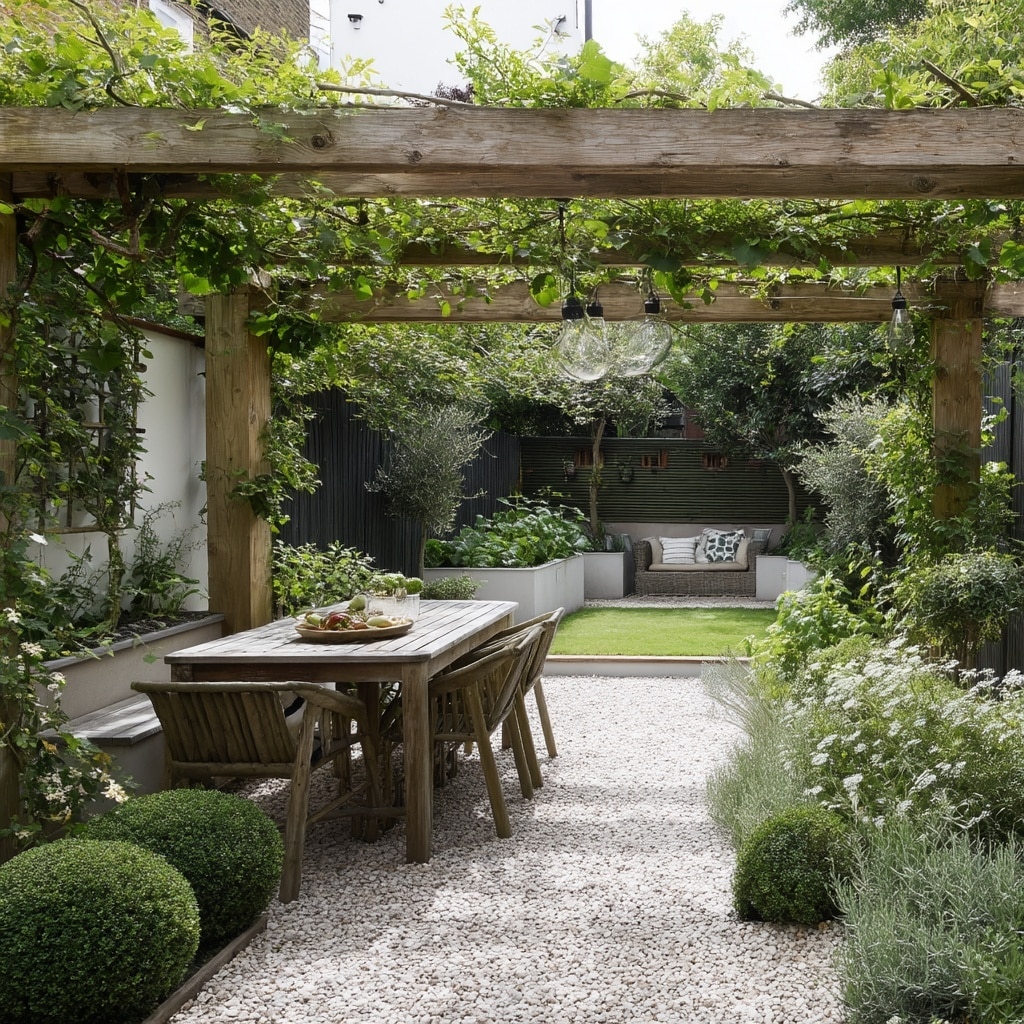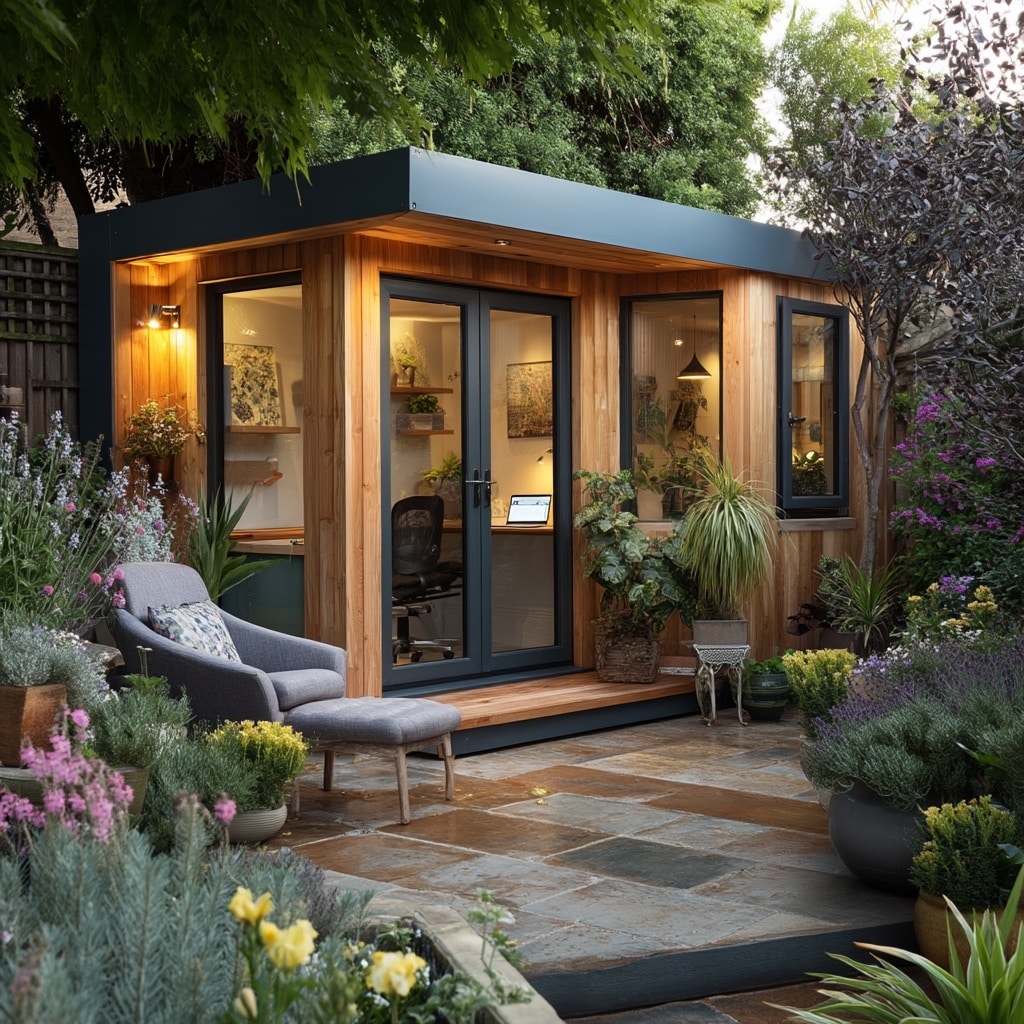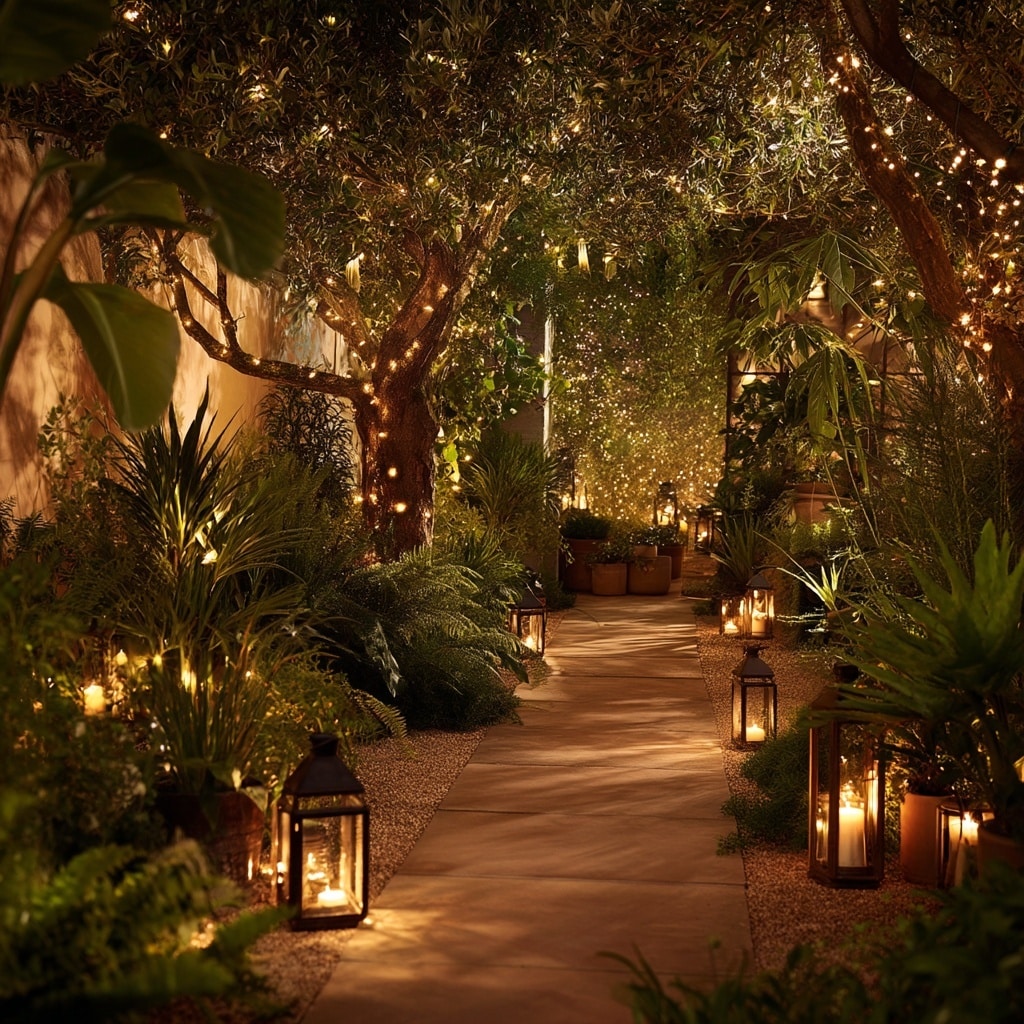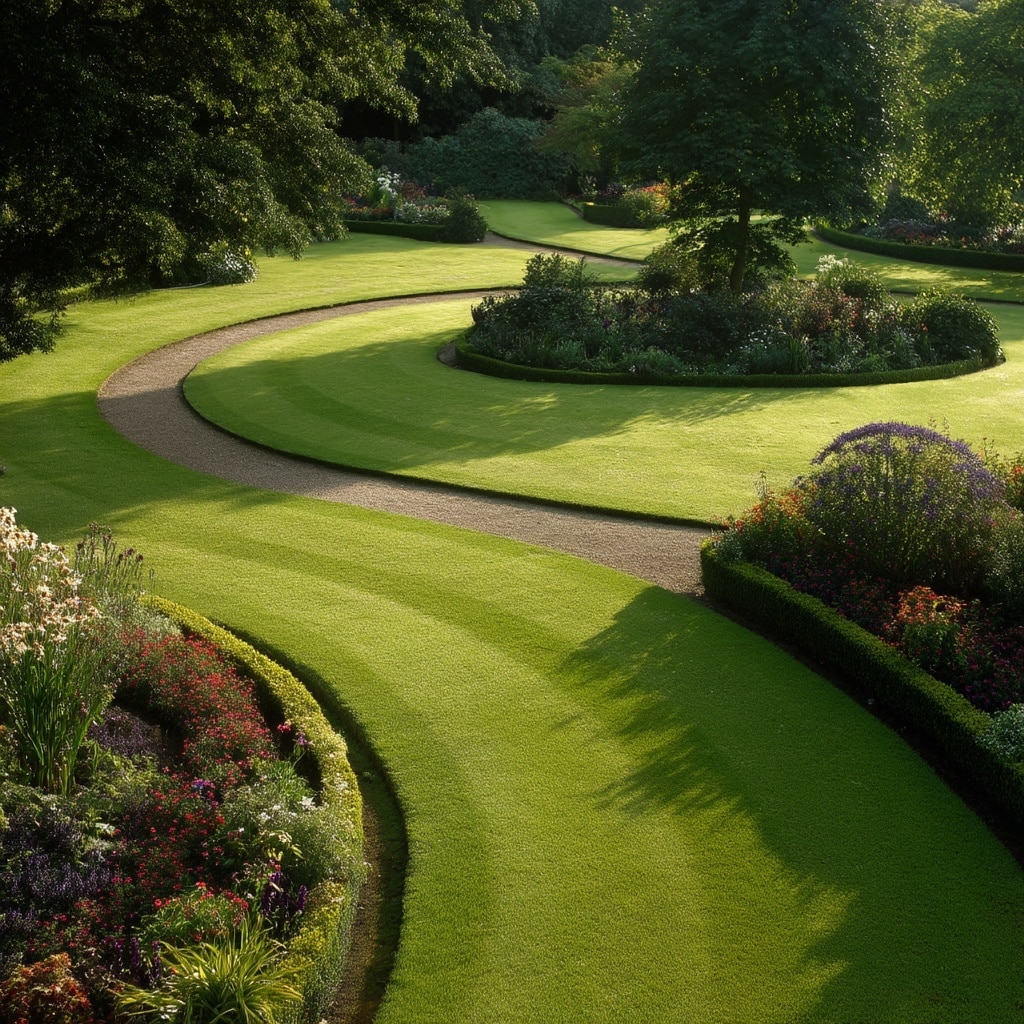Garden design is more than choosing plants — it’s about creating a space that feels like a natural extension of your home. Whether you have a sprawling backyard or a compact patio, thoughtful planning can transform it into a peaceful retreat or a vibrant social hub. From shaping your lawn to layering plants and adding cozy corners, even small changes can bring big rewards. In this guide, you’ll discover eight timeless ideas that can help you design a beautiful outdoor living space that feels welcoming all year round. Whether you’re starting fresh or refining your current layout, each tip will bring structure, charm, and purpose to your garden.
1. Get Your Lawn Into Shape
A healthy, well-shaped lawn is often the foundation of great garden design. It sets the tone for the entire outdoor space and helps guide the layout of surrounding features like beds, borders, and paths. Instead of defaulting to the usual rectangle, try experimenting with curves, circles, or geometric shapes like squares or oblongs. These shapes can make a small garden feel more dynamic and visually balanced.
To keep your lawn looking its best, invest in regular care: mow consistently, feed with the right nutrients, and edge neatly to define its shape. If you’re starting from scratch or dealing with a tired patch, consider reseeding or laying fresh turf to rejuvenate your lawn’s appearance.
2. Create a Layered Look

One of the most effective ways to add depth and dimension to your garden design is through layering. By placing plants of varying heights—tall shrubs at the back, medium-sized perennials in the middle, and low-growing ground covers at the front—you create a visually rich and balanced layout. This method works beautifully in both flower beds and along borders.
To take it a step further, mix in raised planters or terraced beds. These features break up flat spaces and help highlight specific plants or textures. A slightly elevated pathway running through the garden can also add height contrast, making surrounding plants appear more lush and prominent.
Layering isn’t just about aesthetics—it also supports healthier plant growth by improving sunlight exposure and airflow.
3. Install Beautiful Paving

Paving plays a powerful role in shaping the overall feel of your garden design. The materials, patterns, and colors you choose can either anchor the space in a traditional aesthetic or give it a modern edge. For example, light-toned natural stone set in an irregular pattern evokes a rustic, cottage-style garden, while dark limestone laid in clean lines lends a sleek, contemporary look.
Beyond aesthetics, paving also improves functionality. It creates clear walkways, defines seating areas, and offers a solid surface for furniture. To make your garden feel cohesive, coordinate your paving style with nearby elements—match tones with plant containers or repeat shapes from flower beds.
Proper installation and spacing are crucial, especially for drainage and durability, so don’t cut corners when laying down hard surfaces.
4. Plant Vertically on a Patio

Vertical planting is a smart, space-saving technique that adds greenery and charm to any patio, especially in compact gardens. This garden design strategy draws the eye upward and turns bare walls or fences into vibrant features. Whether you’re using hanging pots, wall-mounted planters, or trellises, vertical gardens bring a lush, layered effect to tight spaces.
Choose a mix of trailing plants, evergreens, and seasonal flowers for year-round interest. Herbs like thyme, mint, or oregano also do well in vertical setups and add functionality for outdoor cooking areas. If your furniture has bold colors, match or contrast your plants accordingly for a coordinated, stylish vibe.
Besides aesthetics, vertical planting can also offer privacy and shade—ideal for making patios more cozy and intimate.
5. Pay Attention to Your Boundaries

In any thoughtful garden design, the borders of your space are just as important as what’s inside. Fences, walls, and hedges often frame the entire view, so they should feel intentional and attractive rather than forgotten. Even if you can’t replace old fencing, a fresh coat of paint or a decorative trellis can instantly improve its appearance.
To soften hard edges, plant climbers like jasmine, clematis, or honeysuckle. These not only add greenery and fragrance but also help blend vertical surfaces with the rest of your garden. If boundaries differ on each side, aim for visual balance—use color, height, or texture to create cohesion between them.
Before making structural changes, be sure to check with neighbors if the fence or wall isn’t fully yours. A little courtesy goes a long way in garden harmony.
6. Create Zones

Dividing your outdoor space into functional zones is a clever way to bring structure and versatility to your garden design. Think of your garden as a series of “rooms” with different purposes—perhaps a dining area, a play space, a quiet corner for reading, or a vegetable patch.
Use natural or built elements to define these areas. Low hedges, raised beds, pergolas, or even a change in paving style can subtly separate zones without closing off the space entirely. In smaller gardens, even a shift in plant height or texture can signal a new area.
Zoning doesn’t just improve visual flow—it helps make the most of every square metre. Whether your garden is large or modest, organizing it into well-defined sections makes it more usable, comfortable, and enjoyable year-round.
7. Install a Garden Room

Adding a garden room is one of the most transformative features in garden design. Whether it’s a cozy studio, a home office, or a guest space, a standalone structure lets you enjoy your garden in all seasons—rain or shine. It also increases the functionality of your outdoor area, blending indoor comfort with natural surroundings.
You don’t need a huge plot to make it work. Even compact spaces can fit a stylish summerhouse or modern shed with the right layout. Use natural materials like timber cladding or stone flooring to make it feel cohesive with the rest of your garden. For flooring, sandstone or porcelain slabs can give a clean, durable finish.
With electricity and insulation, your garden room can serve many purposes—from remote work to relaxing retreats—without sacrificing your green space.
8. Aesthetic Lighting for Ideal Garden Space

Thoughtful lighting is the final touch that elevates any garden design from ordinary to enchanting. Just like indoors, layering your outdoor lighting adds depth, warmth, and mood. Use a mix of functional and decorative options—wall lights near seating areas, soft uplights to highlight plants or trees, and fairy lights or lanterns to create a cozy ambiance.
Solar-powered lights are eco-friendly and easy to install, while LED spotlights can bring out the textures of stone paths or garden beds. For pathways and patios, low-level lighting adds both safety and charm.
Don’t forget to think about where you’ll spend time after dark. Whether it’s dining outdoors or simply enjoying a peaceful evening, good lighting helps extend your garden’s use well into the night, making it a true living space—not just a daytime destination.
Conclusion
Great garden design isn’t about spending the most—it’s about making thoughtful choices that reflect how you want to use and enjoy your outdoor space. Whether you’re reshaping your lawn, layering plants, or adding a garden room, each idea can be adapted to suit your garden’s size, shape, and style. The key is to plan with both beauty and function in mind, so your garden feels like a natural extension of your home.
Start with one or two of the ideas that resonate most with you, and build from there. With time, care, and a bit of creativity, your garden can become the most loved part of your home, season after season.




